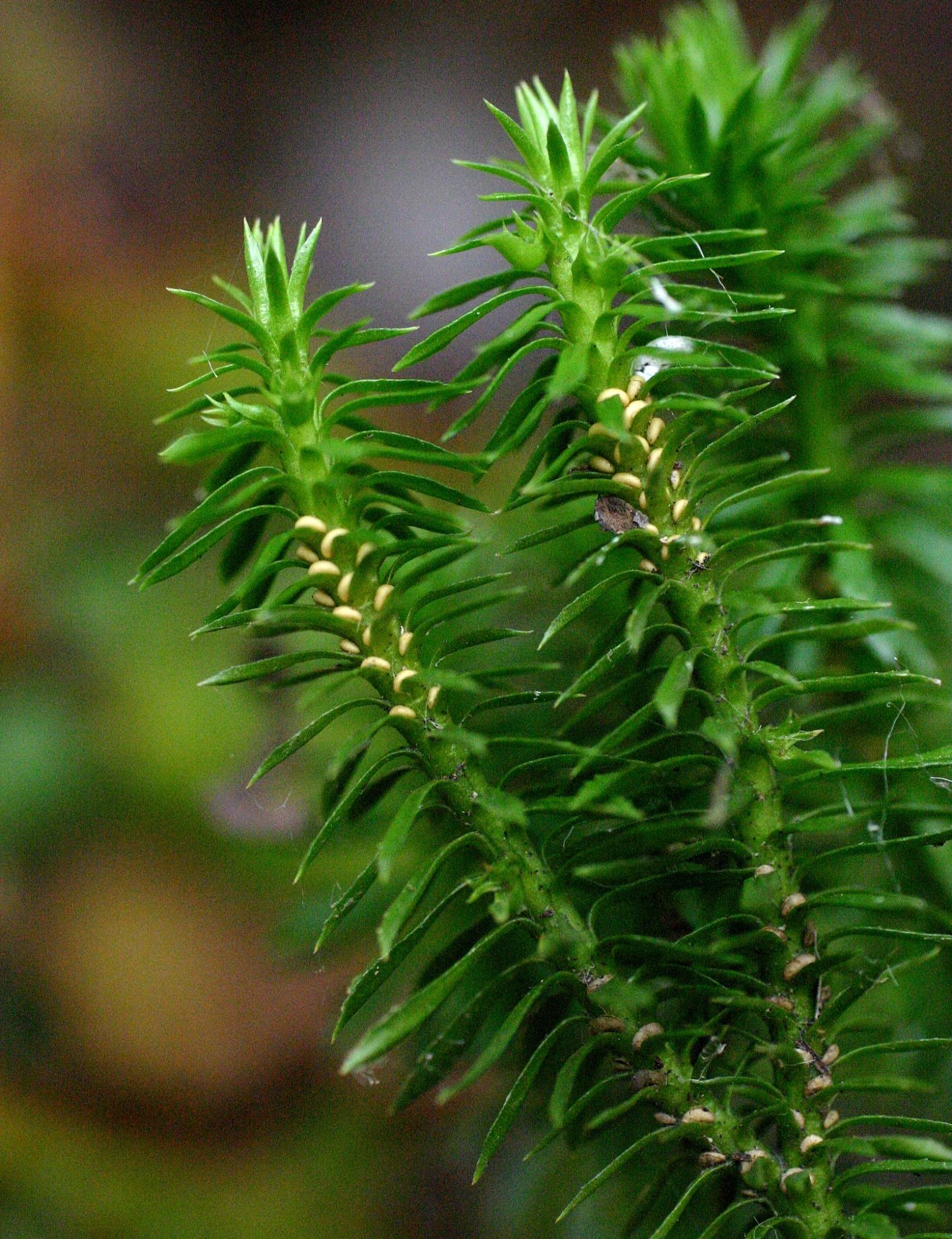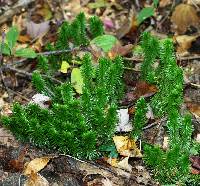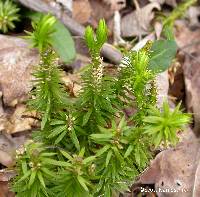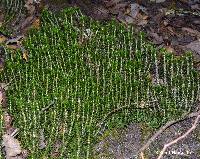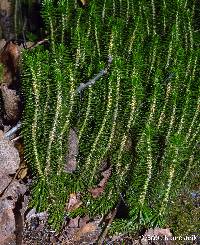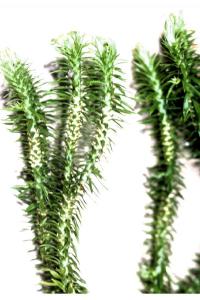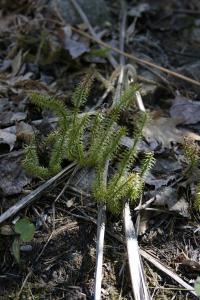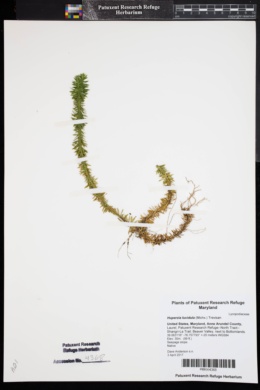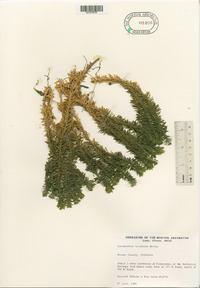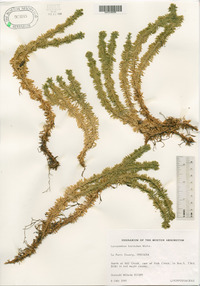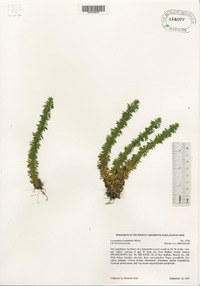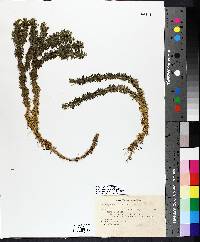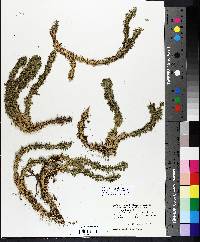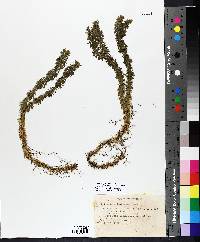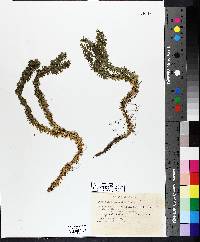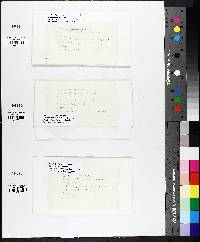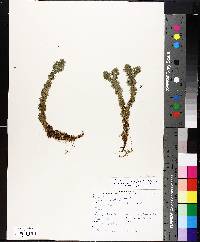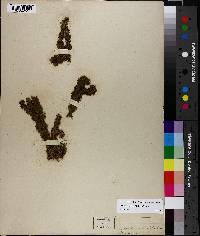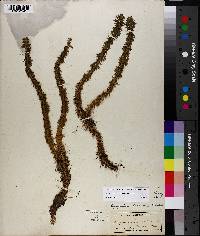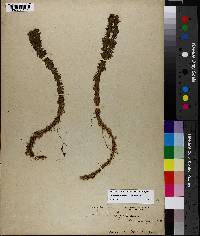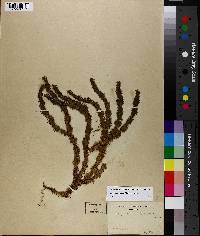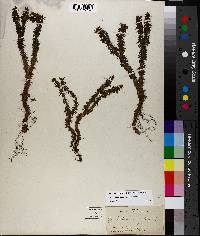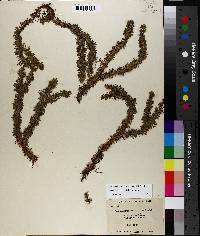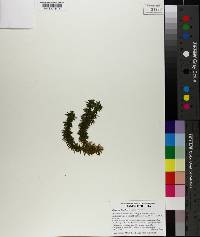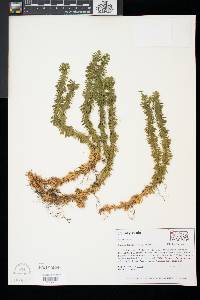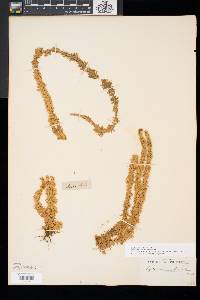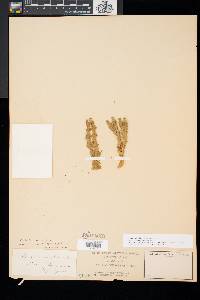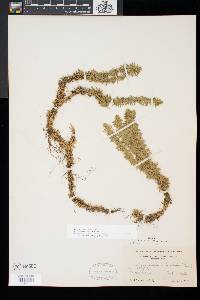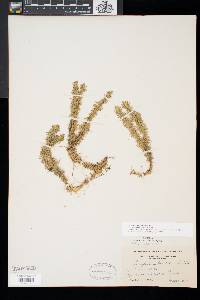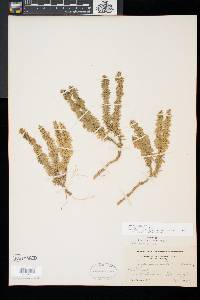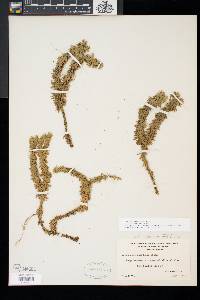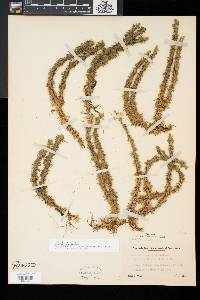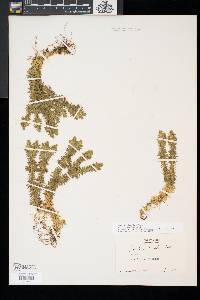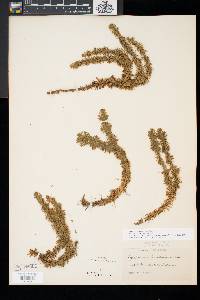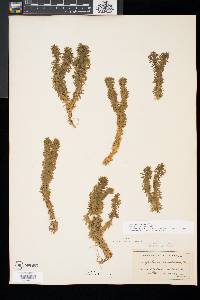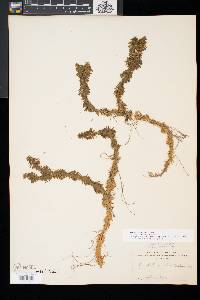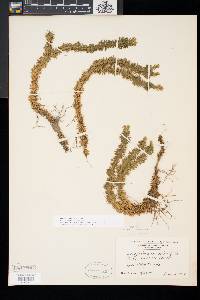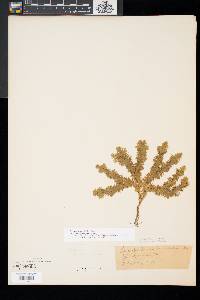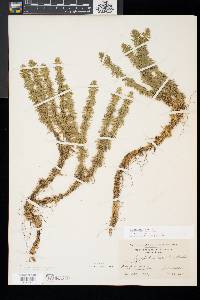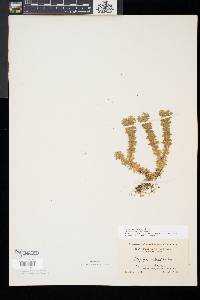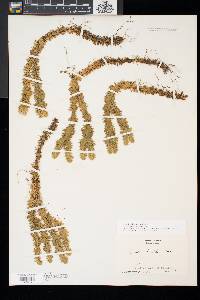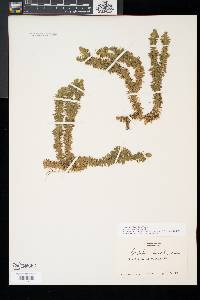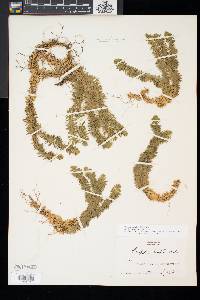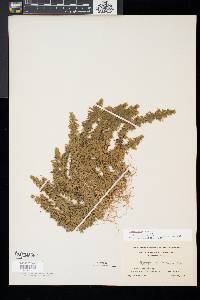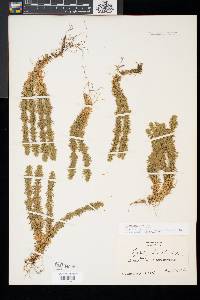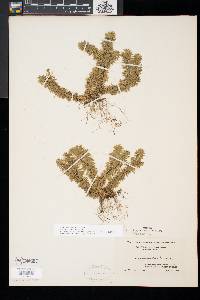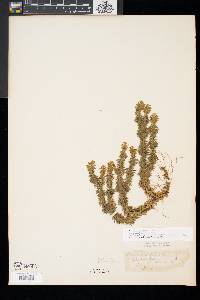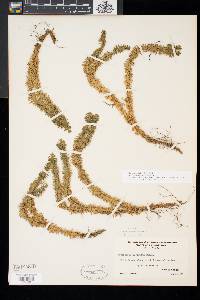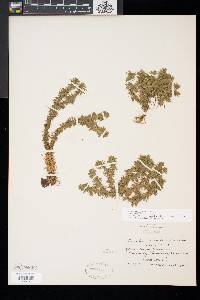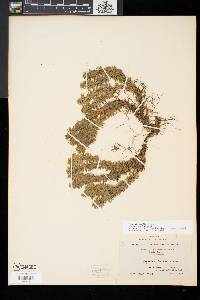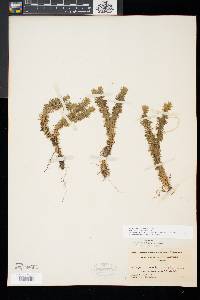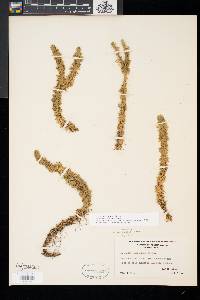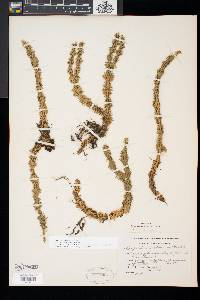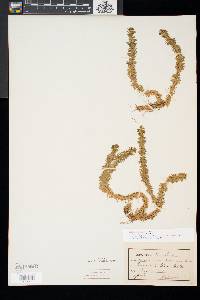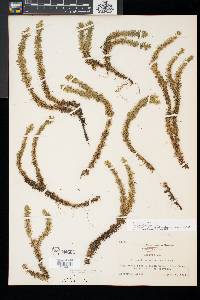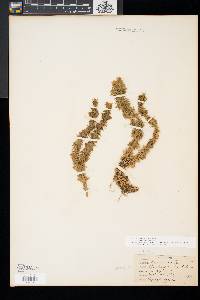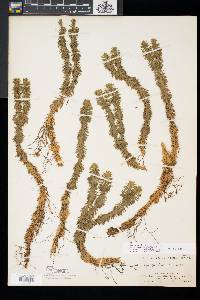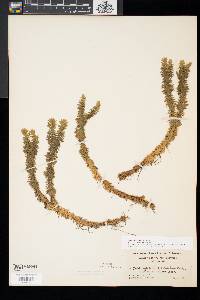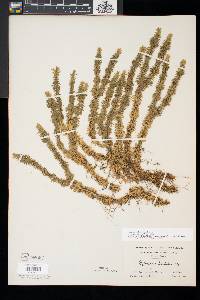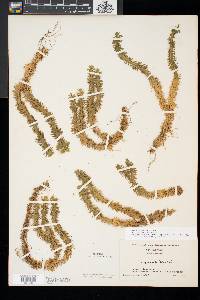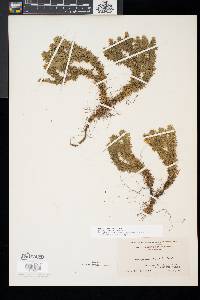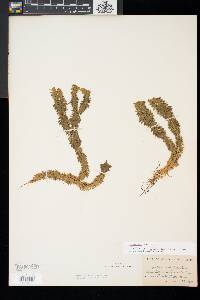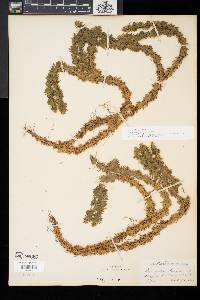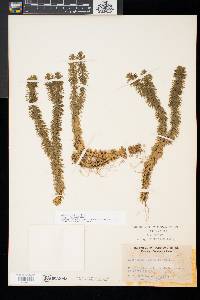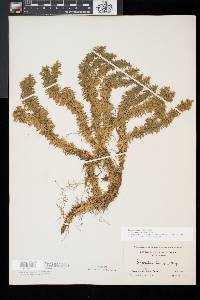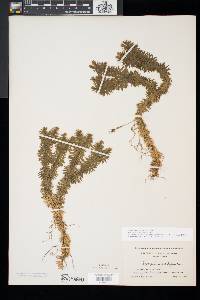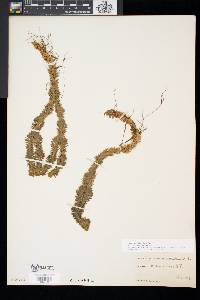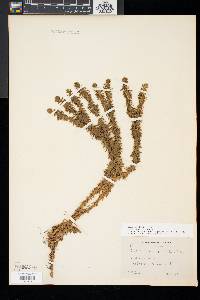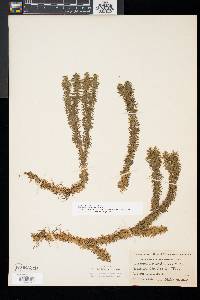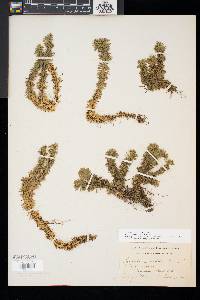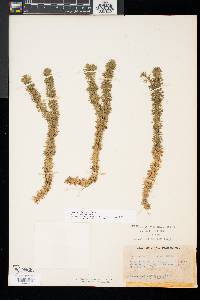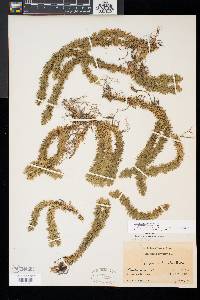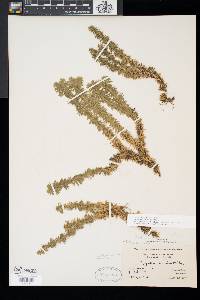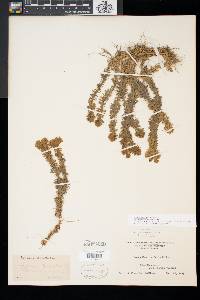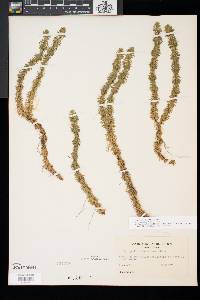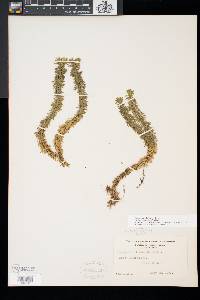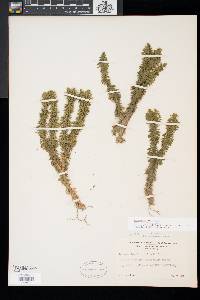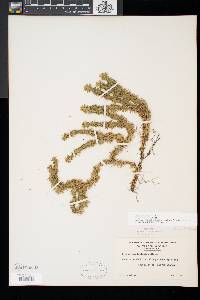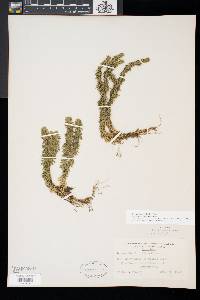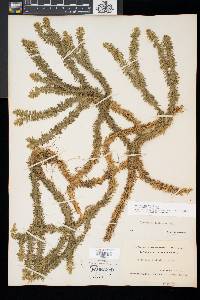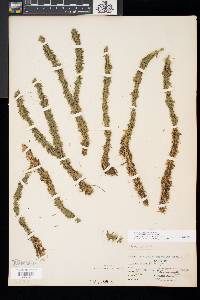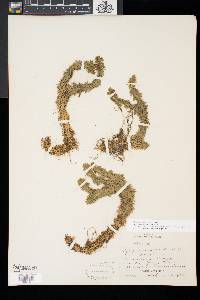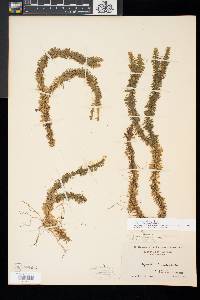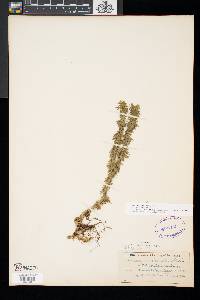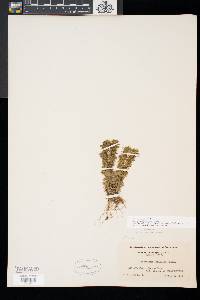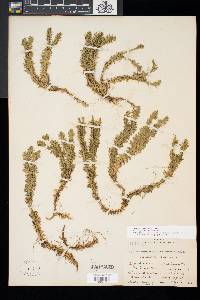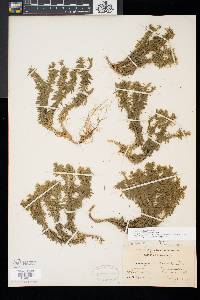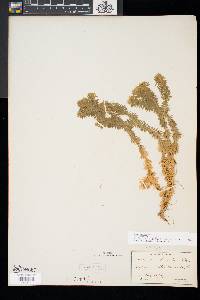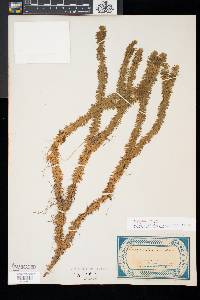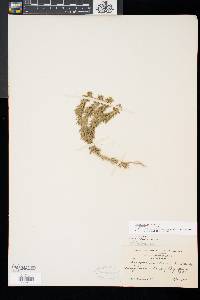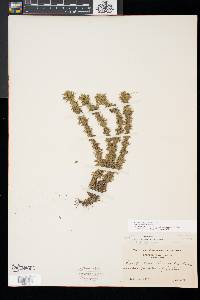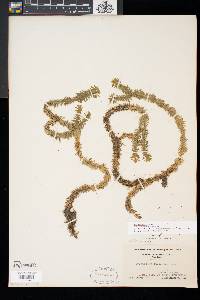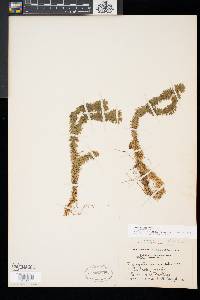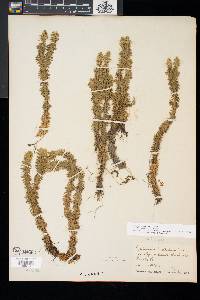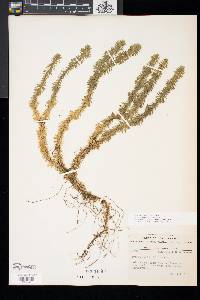
|
|
|
|
Family: Lycopodiaceae
Shining Fir-Moss
[Huperzia lucidula var. tryonii (Mohlenbr.) R.H.Mohlenbrock, moreHuperzia selago subsp. lucidula (Michx.) A.Löve & D.Löve, Lycopodium lucidulum Michx., Lycopodium lucidulum var. lucidulum , Lycopodium lucidulum var. occidentale (Clute) L.R. Wilson, Lycopodium lucidulum var. tryonii Mohlenbr., Lycopodium reflexum Lam., Urostachys lucidulus (Michx.) Herter ex Nessel] |
Shoots erect, indeterminate, 14--20(--100) cm, becoming long-decumbent, with long, trailing, senescent portion turning brown; juvenile and mature portions similar with strong annual constrictions due to formation of winter bud; juvenile growth erect. Leaves spreading to reflexed, dark green, lustrous; largest leaves narrowly obovate, leaves broadest at or above middle, 7--11 mm, margins papillate, teeth 1--8, irregular, large; smallest leaves (at annual constrictions) narrowly lanceolate, 3--6 mm; stomates on abaxial surface only. Gemmiferous branchlets produced in 1 pseudowhorl at end of each annual growth cycle; gemmae 4--6 X 3--6 mm, lateral leaves 1.5--2.5 mm wide, broadly obtuse with distinct mucro. Spores 23--29 µm. 2 n = 134. Terrestrial in shaded conifer forests and mixed hardwoods, rarely on rock on shady mossy acidic sandstone; 0--1800 m; St. Pierre and Miquelon; Man., N.B., Nfld., N.S., Ont., P.E.I., Que.; Ala., Ark., Conn., Del., Ga., Ill., Ind., Iowa, Ky., Maine, Md., Mass., Mich., Minn., Mo., N.H., N.J., N.Y., N.C., Ohio, Pa., R.I., S.C., Tenn., Vt., Va., W.Va., Wis. Huperzia × bartleyi (Cusick) Kartesz & Gandhi, a sterile hybrid between H . lucidula and H . porophila , occurs throughout the range of H . porophila and is discussed under that species. Huperzia × buttersii (Abbe) Kartesz & Gandhi is a hybrid between H. lucidula and H. selago .
Perennial fern ally 14 - 20 cm tall Leaves: in no particular arrangement, just closely spaced, spreading or reflexed, stalkless, dark green, lustrous but warty, with one to eight large irregular teeth, and stomates only on lower surface. The largest leaves are 7 - 11 mm long and narrowly inversely egg-shaped (broadest at or above the middle), whereas the smallest are only 3 - 6 mm long, and more narrow lance-shaped, and tend to be situated near the annual constrictions of the stem. Spores: hundreds per sac, all of one kind, 23 - 29 microns diameter, thick-walled, three-sectioned (trilete) with abruptly blunt angles and pits or shallow grooves. The spores give rise to the gametophyte (the sexual phase of the plant), which is small, narrow or elliptical, underground, not green, but saprophytic, and inhabited by symbiotic fungi (mycorrhizae). Stems: erect, clustered, 2 - 16 mm in diameter, branching near base with aged basal areas becoming trailing or decumbent but strictly horizontal stems never produced. The upright portions of the stems are green, but the older more decumbent portions turn brown. Similar species: Huperzia lucidula is probably most easily confused with members of the genera Lycopodiella or Lycopodium, but those species always have horizontal stems and produce cone-like structures (strobili) of specialized and differentiated fertile leaves (sporophylls) that bear the sacs of spores (sporangia) at the tips of erect shoots. This is the only species of Huperzia that one is likely to see in the Chicago Region. A very old report, with no locatable voucher specimen, claims that H. porophila was found once in Lake County, Illinois. That species differs by having lighter green and narrower leaves that are widest at the base, and the leaves are non-toothed or have only a very few teeth at the very base. Habitat and ecology: Occasional, in moist woods and somewhat boggy areas, especially in the eastern part of the Chicago Region. Occurence in the Chicago region: native Notes: Members of this genus were once included under the broadly defined genus Lycopodium. However, their separation is merited based on several factors, especially that members of the genus Huperzia produce vegetative, asexual bodies or buds among their leaves (gemmae), which detach from the parent plant to form new plants. No other members of the Lycopodiaceae family in North America produce gemmae. This is a feature that commonly occurs in lower, non-vascular plants such as mosses and liverworts. This is the most common species of Huperzia in eastern North America. Much further north H. selago becomes more common and has an expansive range. In areas where these two species overlap, they hybridize to form H. x buttersii. Huperzia lucidula has also been known to hybridize with H. porophila to produce a sterile hybrid named H. x bartleyi. Etymology: Huperzia is named after Johann Peter Huperz, an early 19th century German botanist and fern specialist. Lucidula means "somewhat shining". Author: The Field Museum Stems lax, with ±elongate, rooting, leafy base and ascending branches to 25 cm, 1.5-2 mm thick (excl. lvs); lvs mostly 6-ranked, spreading or reflexed, shining, oblanceolate, usually toothed above the middle, lacking stomates on the upper surface, unequal in length so that the shoot looks ragged, the early lvs of the season the shortest and commonly subtending sporangia, the later ones mostly 7-12(-15) נ1.2-2+ mm; spores 20-30 microns in diameter; otherwise much like no. 1 [Lycopodium selago L.]; high polyploid, 2n=134. Wet woods and rocks in acid soil; Nf. to Ont. and Minn., s. to S.C., n. Ga., n. Ala., and nw. Ark. (Huperzia l.) Gleason, Henry A. & Cronquist, Arthur J. 1991. Manual of vascular plants of northeastern United States and adjacent Canada. lxxv + 910 pp. ©The New York Botanical Garden. All rights reserved. Used by permission. From Flora of Indiana (1940) by Charles C. Deam Very local. It grows in deep humus, sometimes forming large colonies. In the lake area it is generally found in decadent tamarack bogs and southward in moist, shaded woodland, although my Clay County specimen was found in the open among rocks along Croy Creek. ...... Indiana Coefficient of Conservatism: C = 5 Wetland Indicator Status: FACW Diagnostic Traits: horizontal stems lacking; leaves 7-11 mm long, narrowly obovate; stomates only on lower surface of leaves; sporangia in axils of unmodified leaves. |

